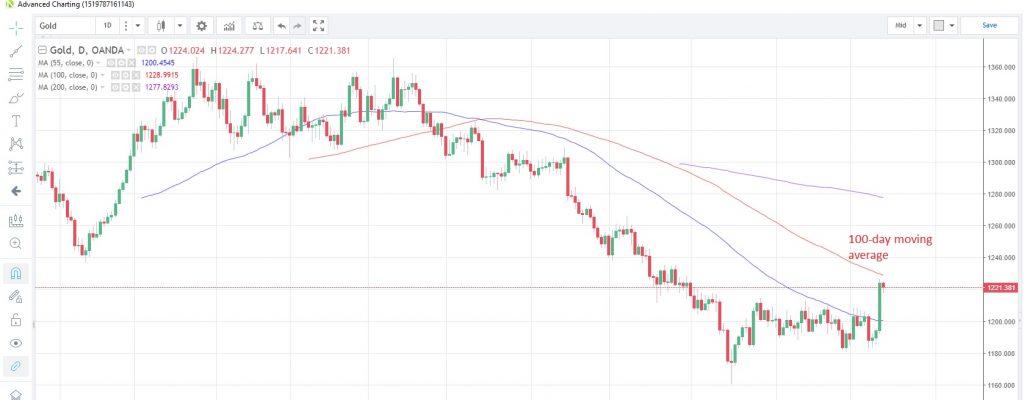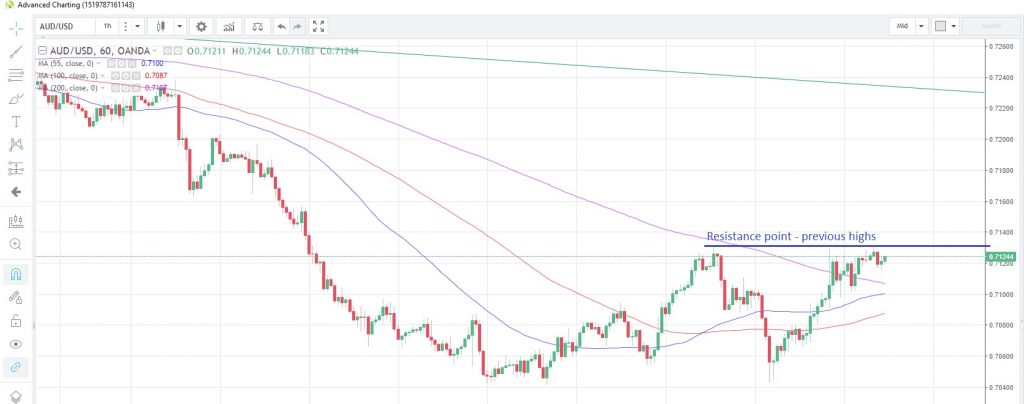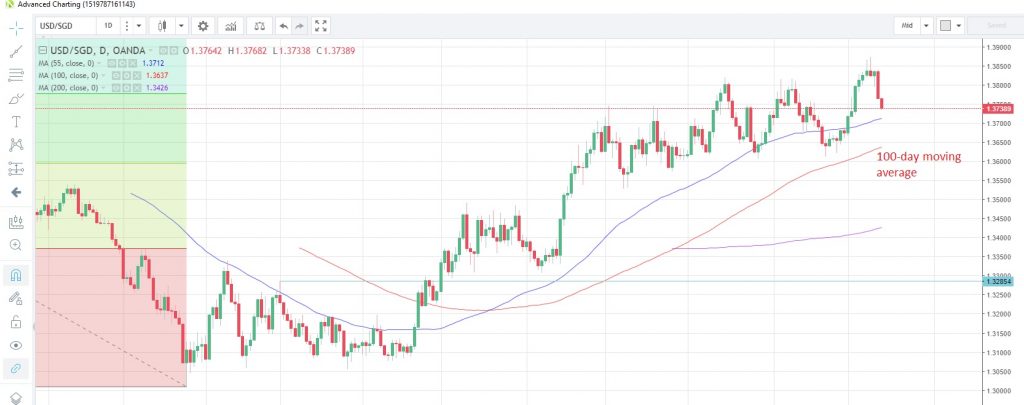
Gold is back in favor
The safe haven of gold, very much unloved over the past few months as it stood in the dollar’s shadow, saw its fortunes reverse yesterday to record the biggest one-day gain in almost 2-1/2 years. A weaker US dollar amid easing US yields and a below-forecast CPI print, reduced demand for the greenback, leaving gold to take up the slack, for a change.
Gold jumped more than 2.5%, its biggest one-day gain since June 2016, to reach the highest level since July 31. The commodity is now testing the 100-day moving average at 1,228.99, which has capped prices since April 30.
Gold Daily Chart
China’s trade surplus with US hits record high
The September trade numbers will likely not be music to Mr Trump’s ears. Exports rose 14.5% y/y, beating economists’ estimates of a mere 8.9% increase. That’s the biggest monthly gain since February. The overall trade surplus widened to $31.7 billion, the highest in three months.
China Customs also reported that exports to the US were up 16.6% y/y while imports from the US rose just 1.6% y/y, pushing the trade surplus with the US to a record high $34.1 billion. The agency commented that the impact from the US trade frictions was “controllable” and that Chinese exporters were diversifying their markets.
The reaction in FX markets was marginal. AUD/USD slid to 0.7118 from 0.7124 while USD/CNH rebound from intra-day lows to 6.9026. AUD/USD currently appears to be struggling to overcome previous highs in the 0.7130-31 window.
AUD/USD Hourly Chart
Singapore tightens policy marginally as Q3 growth beats estimate
In its semi-annual policy review, Singapore’s de-facto central bank tightened policy by a minimal amount. Rather than fix a benchmark interest rates, Singapore manages monetary policy by guiding the value of the local dollar against a basket of currencies of its major trading partners. The MAS raised “slightly” the slope of appreciation of the net effective exchange rate (NEER) trading band of the Singapore dollar, keeping the width and center of the band unchanged. This was tantamount to a mild tightening of monetary conditions as latest surveys had suggested it was a 50/50 chance.
Looking ahead, the MAS sees 2018 growth in the upper half of a 2.5% to 3.5% range then moderating “slightly” in 2019. Core inflation is seen in a 1.5% to 2.0% range and averaging 1.5% to 2.5% in 2019.
The Singapore dollar rose marginally after the announcement, with USD/SGD poised to record its second consecutive daily loss. USD/SGD is now at 1.3739 with the 100-day moving average below at 1.3637.
USD/SGD Daily Chart
One of the first nations to report Q3 GDP numbers, Singapore’s economy grew 2.6% y/y, faster than the than the 2.5% growth anticipated by economists, but slower than the 3.9% pace in Q2. On a quarterly basis, growth was below expectations of a 4.9% increase, but faster than the 0.6% posted in Q2.
China will release its Q3 GDP data next Friday and is also expected to show slower annualized growth from Q2. The latest survey suggests 1.6% q/q and 6.6% y/y from 1.8% and 6.7% respectively.
Will German CPI echo the US miss?
After yesterday’s release of below-forecast CPI data from the US, today it’s the turn of Germany. Estimates for September suggest consumer prices rose at the same pace as August, up 0.4% m/m and 2.3% y/y. August industrial production data for the Euro-zone follow the CPI numbers and then the calendar thins out with only second-tier US data scheduled. Export and import prices and Michigan sentiment index are the highlights, with speeches from Fed’s Evans and Bostic completing the week.
You can view the full MarketPulse data calendar at https://www.marketpulse.com/economic-events/
Have a great weekend from Asia.
Dollar Lower on Weak Inflation OANDA Market Beat Podcast





